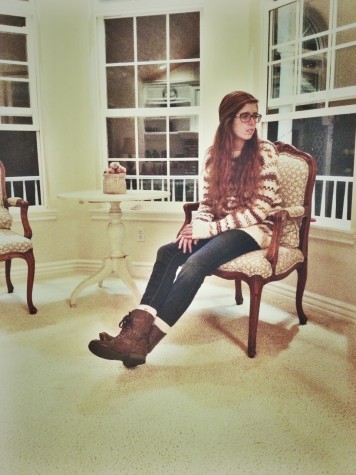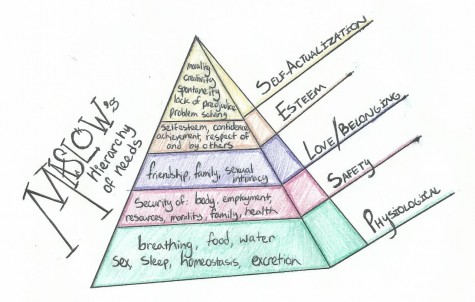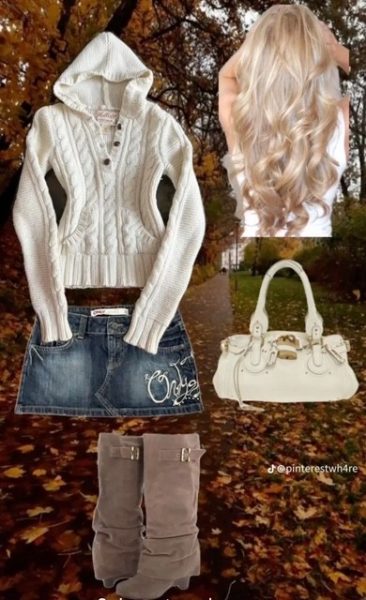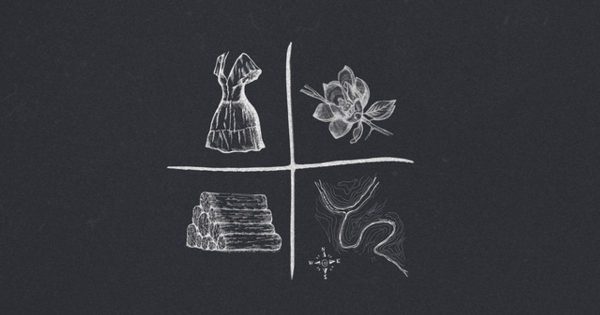#throwingitback
The throwback trend is more than just a fashion thing, it’s a human thing.
If you’re 50 years old, chances you grew up with Michel Jackson’s “Thriller” playing on your Walkman.
If you’re 40 years old, your go-to outfit back in the day was definitely your neon spandex biker shorts and Cosby sweater.
If you’re 30 years old, just admit it: you were jamming to NSYNC all throughout high school.
But if you’re from this generation, most of your fads and fashions are throwbacks.
The skinny jeans, miniskirts and Ray-Bans that we’re wearing today, came from the 80s.
The midriff tops, Doc Marten boots and overalls are all exemplary 90s styles that have recently popped back into our lives.
But why?

Back to the roots – Senior JeanneAnn Faris throwsback in “indie” style with her old fashioned combat boots, grandma sweater and Cosby-striped fanny-pack.
“Fashion as a whole is pretty much one giant circle,” said junior Elliana Maggetti. “All the big trends are going to come back around, such as high-waisted shorts and pants and cut off sweaters. Bringing back old styles is just how fashion works and revolves.”
Today we hear about the hipsters (back in the ‘80s they were called ‘cornchips’) and styles like indie and grunge. Although these fashion followers endeavor to be original, their “new look” is only an imitation of the “old look”. Their style is rekindling former fads from earlier generations
Our tendency to revert back to the past is rooted in human nature. It’s characteristic of human beings to make sure their basic personal needs are met. Safety goes along with familiarity. In other words, what is well-known is usually what is known to be secure. Sticking to trends that were popular in the past offers a sense of security we all inadvertently cling to.
Coined by American psychologist Abraham Maslow, Maslow’s Hierarchy of Needs is a tiered pyramid made up of several levels standardizing the general needs of human beings. Ranging from a person’s most basic needs to the ultimate peaks self-understanding. The bottom tiers of this pyramid provide an interesting perspective upon this generation’s current obsession of the past.
“The bottom tier is about physiological needs — your food, your drinks and so on,” said AP Psychology teacher Dr. Christine Veilleux. “Right after that is ‘safety needs’ — when people go back to the past. It’s like a security blanket.”
“I do think that older trends are a little easier for people to wear; seeing as how they’ve worked in the past,” said junior Raelyn Browning. “Most people, mainly girls, aren’t comfortable coming up with new fashion; since it’s not assured that it’ll look good on them. In this day and age, the mindset of girls all around the world is that they have to look nice, and this is best achieved by using styles from the past.”
Whether it be adopting the styles your grandmother used to wear or bringing back to life fads like the Polaroid camera, taking an interest in the past can create greater room for creativity.
“If you think about what worked in the past, you can use it to your advantage,” Veilleux said. ”You can modify it, you can add to it. Because if it was working in the past, it can be working again.”
It’s quite ironic that in order to fit in, people feel the need to stand out, and do so by wearing outdated fashions. It’s the new perspectives and additions on old trends that make them shine new.






